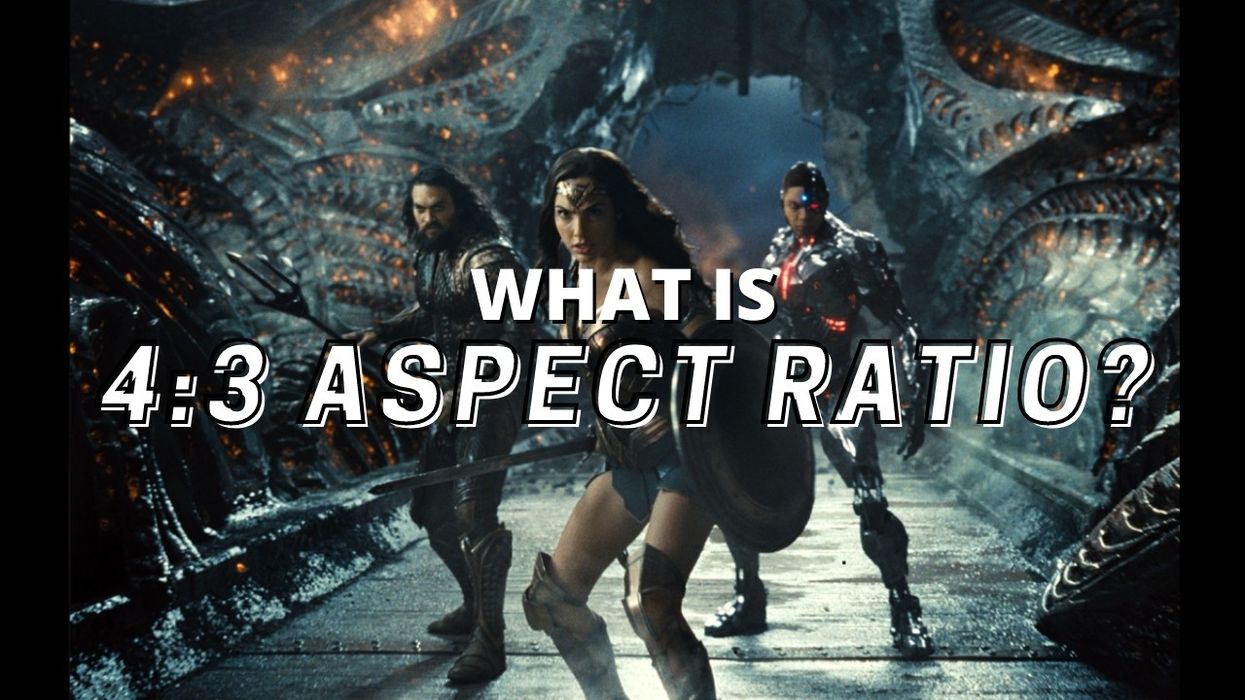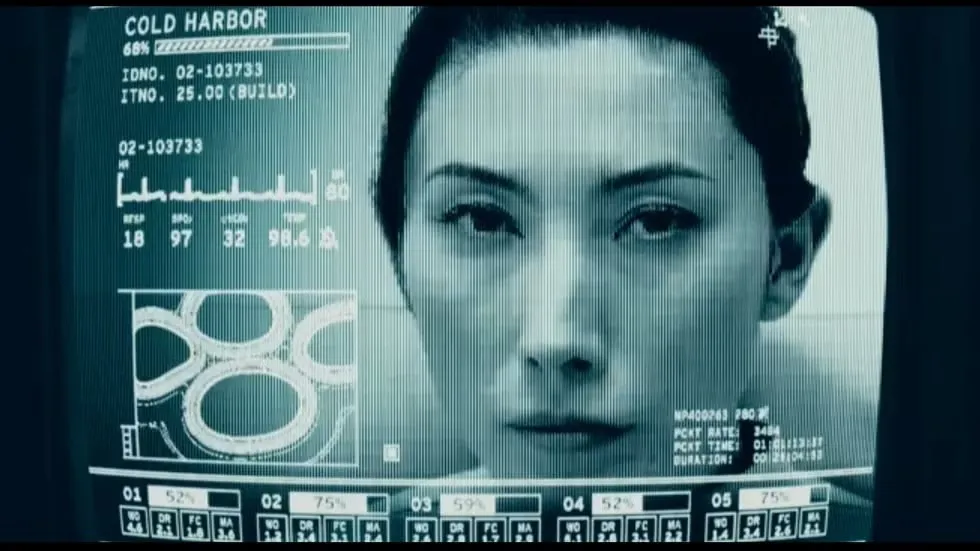What Is the 4:3 Aspect Ratio and How Is It Used?
Let's dive into the 4:3 format and discuss why it works as an aspect ratio.

From the dawn of cinema, Hollywood has debated aspect ratios. While it has changed with different projectors and types of film stock, the original aspect ratio has survived and is still used today. I'm talking about the 4:3 format. It was what they shot the first movies on, and what shook everyone up last year when they saw Zack Snyder's Justice League broadcast in the same ratio.
Hollywood has been talking about aspect ratios since the very first film. People had to determine the size, project, and what parts of the story actually happened within the frame.
Today we want to focus on just one. What does 4:3 aspect ratio mean? Why was it chosen, and why has it withstood the test of time?
Let's dive in.
What Is the 4:3 Aspect Ratio?
The 4:3 image is one of the most indelible remnants of films from the past, but it also shows us where the future of cinema may go, thanks to IMAX and large-format cameras. It's fitting that where Hollywood began could also be a signifier of where it will go.
What Is Aspect Ratio?
The aspect ratio of an image describes its width and height.
It's usually written as two numbers separated by a colon, as in 16:9. It can also be written with an “x” between the numbers, like 4x3.
What Does 4:3 Mean?
Let's talk history. Before the 24mm x 36mm "still" 35mm image, there was the 24mm x 18mm "cinema" 35mm image.
Movie film runs vertically to be projected. Therefore, the traditional movie aspect ratio was 4 wide by 3 high. This means a frame four by three, or in the more technical 1.33:1.
This square frame was the dimensions of early TV box sets and also the default size of the first 35mm celluloid film.
Aspect Ratio History
Aspect ratios have changed over time, depending on what people use to view media. As screens got bigger, the aspect ratio adjusted. As they got smaller, it continued to happen. Over 100 years ago, the very first films were projected in 4:3. The standard film strip was run through a projector and the light behind it threw the image onto a wall.
The 4:3, or 1.33:1, was the literal measurement of the strip.
When sound became standard, the extra space on the film stock required the aspect ratio to be adjusted to a slightly wider 1.37:1. This is known as the Academy Ratio, which is often represented as “4:3."
Modern TV and Film Aspect Ratios
TV boxes were 4:3 until widescreen televisions debuted in the 2000s. Many older programs had to convert their 4:3 shows to 16x9. But people who watched movies on TV rejoiced. The theatrical experience had finally come home. And as TVs grew in size, aspect ratios began to reflect the change.
This led to the idea of pan and scan, where widescreen films were reformatted to fit 4x3 television sets. But widescreen TVs became all the rage in the early 2000s, and those smaller televisions disappeared. Older sitcoms had to be reformatted to show in 4x3, and TVs had to be able to create a 4:3 format box in the middle of their wider screens to capitulate to the changing times.
Aspect Ratio 1.33:1
As we mentioned above, the 1.33:1 is another way of saying the 4:3 aspect ratio frame.
For example, an aspect ratio of 1.33:1 means the image's width is 1.33 times the size of its height. You can trace this all the way back to Thomas Edison’s equipment. Since that's one point where movies began, there was not much of a move to change them right away.
The ratio 1.33:1, which was dubbed “Academy aperture” in 1932 by the Academy of Motion Picture Arts and Sciences, soon became the standard ratio in film, and was used until the 1950s. That's when CinemaScope and other aspect ratios were developed and expanded upon.
Modern Uses of 4:3 Aspect Ratio Frame
We've seen these aspect ratios make a comeback, with people like Wes Anderson, Paul Schrader, and others using it in their films.
The compressed frame can allow you to feel claustrophobic or even evoke different kinds of memories. It can also be used to feel old-timey and hearken back to forgotten eras. If you want to check out No Film School’s interview with Rick Alverson about his movie The Mountain, he talks about shooting in 4:3, and he shared how it informed blocking his actors.
He's not alone. David Lowery used it for A Ghost Story, Paul Schrader for First Reformed, and Andrea Arnold did it with American Honey. But the most revolutionary recent use was Zack Snyder going 4:3 in Justice League.
Why Is Zack Snyder's Justice League in 4:3?
When you turn on The Snyder Cut on HBO Max, you will be immediately notified, “This film is presented in a 4:3 format to preserve the integrity of Zack Snyder’s creative vision.” This disclaimer is to make sure people know it's supposed to look like that. But why?
When asked why he used the 1.33:1 aspect ratio framing, Snyder said, "My intent was to have the movie, the entire film, play in a gigantic 4:3 aspect ratio on a giant IMAX screen. Superheroes tend to be, as figures, they tend to be less horizontal. Maybe Superman when he’s flying, but when he’s standing, he’s more of a vertical. Everything is composed and shot that way, and a lot of the restoration is sort of trying to put that back. Put these big squares back... it’s a completely different aesthetic. It’s just got a different quality and one that is unusual. No one’s doing that."
Of course, these plans were made for the theatrical version of the film. We haven't seen it grace IMAX, but I bet we do eventually. Snyder could not shoot the whole film in IMAX due to the technical limitations of bulky IMAX cameras and the massive cost, but he instead could shoot the film on 35mm with a 1.33:1 aspect ratio. That way, when it was broadcast on an IMAX screen, it would take up the whole thing, and become an immersive spectacle.
Summing Up the 4:3 Aspect Ratio
Filmmakers are always looking for new ways to use old Hollywood tricks. The boxy aspect ratio of 1.33:1 is no different. The rise of television allowed filmmakers to keep the 4:3 aspect ratio, but times changed, and now we favor widescreen.
Still, filmmakers will always look back to change certain aspects of their story or just to pay homage. We have become interested in larger images thanks to IMAX, and that's let the 4:3 frame come back and get popular.
It seems like, with anything, this kind of framing will come and go from popular culture but never truly disappear.
Let us know what you think in the comments.
- Take a Break from Super Wide — Portrait Film 'Dayveon' Shows 4:3 is Still Relevant ›
- How to Use Aspect Ratio as a Creative Tool; Rediscover the Value of 4:3 ›


















